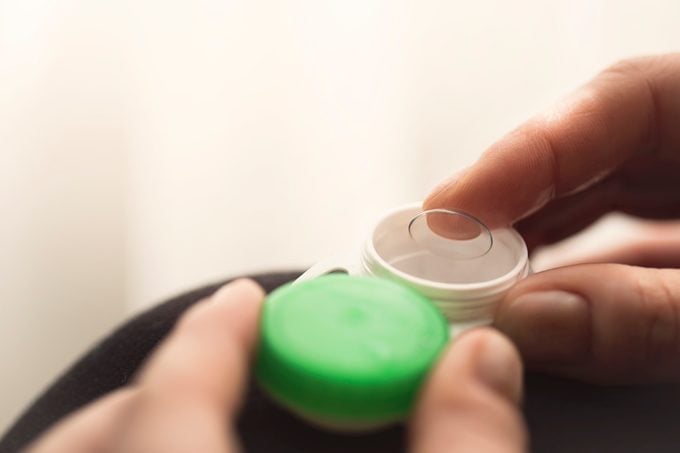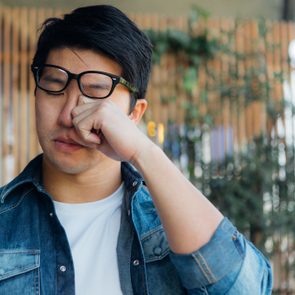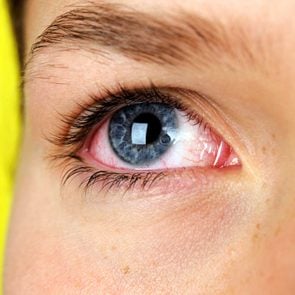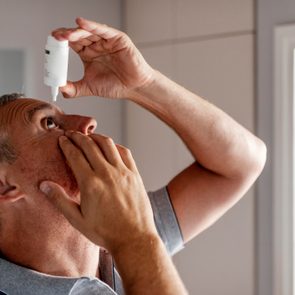The Best Contacts for Dry Eyes, According to Doctors
Updated: May 27, 2021
Keep your eyes moisturized and comfortable with the best contacts for dry eyes, from daily disposable lenses to scleral contact lenses.
Our editors and experts handpick every product we feature. We may earn a commission from your purchases.
Living with dry eye
If you are one of the millions of people who live with dry eyes, you know the condition is literally something to cry over: In an ironic turn, the condition can lead to excess tears.
Contact lens wearers know all too well that the lenses can aggravate dry eye symptoms. But you shouldn’t have to sacrifice your vision to relieve your dry eyes.
Marked by stinging, eye fatigue, red eyes, sensitivity to light, blurry vision, and reliance on artificial tears, dry eye takes its toll on quality of life.
“You feel like you want to rub your eyeballs out,” says Angela Bevels, an optometrist who runs Elite Dry Eye Spa in Tucson, Arizona.
Understanding dry eye
Your tears spread across your cornea (the front surface of your eye) every time you blink. From there, they moisten the surface, keep debris out and protect your eye from other outside threats.
When you aren’t producing enough tears or there are issues with tear drainage, your eyes can become dry and irritated.
There are many potential reasons that dry eye can happen, including certain underlying diseases like Sjögren’s syndrome, which occurs when your body misfires against your tear and saliva glands, and other autoimmune conditions, including rheumatoid arthritis and lupus.
Skin diseases on or around your eyelids and diseases of the meibomian glands in your eyelids may also increase your risk of developing dry eye.
Other dry eye causes include medication side effects and/or exposure to smoke or other eye irritants.
If you wear contact lenses or have had eye surgeries such as LASIK or cataract surgery, you are also more likely to develop dry eye.
This doesn’t mean that you can’t wear contacts if you are prone to dry eye.
“Many people with dry eye can wear contact lenses,” says Jayne Mulhern, an optometrist at Paoli Eye Institute in Paoli, Pennsylvania. “There are a variety of contact lens types, materials, and modalities that give dry eye patients many options.”
Using contact lenses
About 45 million people in the United States wear contact lenses to improve their vision, according to the Centers for Disease Control and Prevention.
Some of these folks may also have dry eye, but contact lenses can also cause dry eye in their own right. According to a study in a 2017 issue of Clinical Optometry, 40 percent of people who wear contact lenses say that dry eye is their chief complaint.
There are two main types of contact lenses: soft and rigid gas permeable. Soft contacts are flexible and let oxygen pass through to the cornea, while rigid gas permeable contact lenses are harder and more durable. Some contact lenses are for daily use, and others are indicated for longer periods of time.
Each type of contact lens has its own set of advantages and disadvantages, some of which are highly relevant for people with dry eyes.

The best contact lenses for dry eyes
To determine which type is best for you, you’ll need to understand your options. Our panel of experts explains the types, materials, and other aspects to consider when choosing the best contacts for dry eyes.
Daily disposable lenses
Daily disposable lenses are an easy go-to lens for people with dry eye, Mulhern says.
Wearers of these contacts insert a fresh lens in the morning and then throw that lens out when they remove it at the end of the day. (This is what can happen if you don’t remove your contacts.)
“Because daily contact lenses are not designed to last up to 30 days like monthly soft contact lenses, they can be thinner and have a higher water content, therefore improving lens comfort,” she says.
“Daily disposable contacts are the absolute best for chronic dry eyes,” agrees Rupa Wong, MD, an ophthalmologist in Honolulu, Hawaii. She recommends several contacts for people with dry eye, including Acuvue Oasys by Johnson & Johnson, Infuse by Bausch & Lomb, and Dailies Total 1 by Alcon.
Two-week or monthly lenses
Although daily contact lenses are a good option, many people with dry eye can still use two-week or monthly lenses, Mulhern says.
“These lenses are inserted in the morning and removed at the end of the day, just like a daily lens,” she says.
However, the lens is placed in a case with solution overnight, where it sits until it is inserted the next day. After two weeks or a month, you’ll throw out the lens.
“It’s key to follow care instructions and not wear these lenses for longer than they are indicated,” she says.
It’s worth noting that while people with dry eyes can wear this type of lens, they’re not always the best idea. Contacts that are reusable can make dry eyes worse, Wong warns.
Soft lenses
Lens material also makes a difference in contact lens comfort. And each has its benefits and drawbacks.
Many soft lenses are made of a hydrogel material, which is hydrophilic, or water-loving, and keeps them soft, Mulhern explains.
“However, this can also cause the lens to be more fragile and increase protein deposition on the lens, which can decrease lens comfort,” she says.
Silicone hydrogel lenses
A more recent technology, silicone hydrogel lenses, can help retain water. “Silicone helps to retain moisture, so looking for lenses with silicone in them will help retain water on the front surface of the eyes,” Dr. Wong says.
Scleral contact lenses
Scleral contact lenses can also be a boon for dry eyes.
Instead of sitting directly on the cornea, a scleral lens rests on the sclera, or the white part of the eye, Mulhern says.
“This lens vaults the cornea, and a fluid-filled reservoir sits between the lens and the front surface of the eye, providing both moisture and usually improved vision,” she says.
The importance of a lens solution
Choose a lens solution that is preservative-free and hydrogen peroxide-based to avoid irritation.
“The multipurpose solution that you’re soaking your contacts in may contain preservatives, and these preservatives can contribute to worsening dryness as they leach out of the contact while you’re wearing them,” she says.
If you must use a two-week or monthly lens, use Clear Care solution to clean them since it doesn’t contain preservatives, Wong says.
“Other steps you can take to limit dryness are to use preservative-free artificial tears specially formulated for contact lenses, use a humidifier at night, limit oscillating fans, and maintain proper hydration,” she adds.
(Here’s why you might have dry eyes at night or waking up in the morning.)
Contact lenses and dry eyes
You can safely wear contact lenses if you have dry eye. It’s important to choose the correct lenses and follow all of the care instructions.
“It is also relatively simple to adhere to any existing dry eye regimen you may have, whether it’s prescription drops or artificial tears,” adds Mulhern.
No matter what type of lens you choose, don’t sleep with your contacts in. “This can significantly lessen oxygen permeability to the eye as well as increase the risk of infections,” Mulhern says.
Next, try these dry eye home remedies to get relief.


















